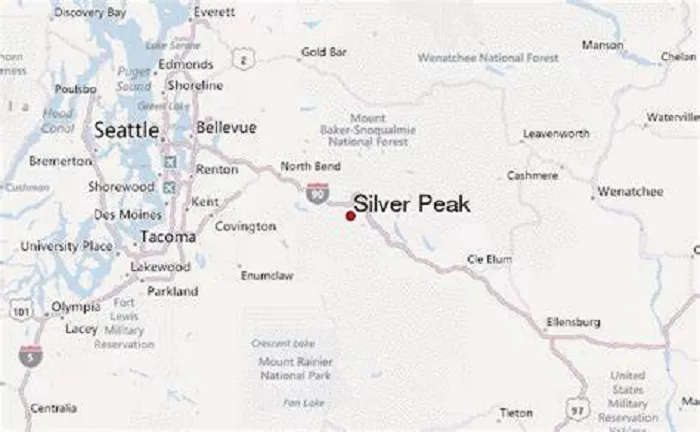Silver Peak is a small, unincorporated community located in Esmeralda County, western Nevada. Renowned for its rich mining history and significant lithium production, understanding its geographical location and historical context offers valuable insight into this unique region.
Established during the silver rush of the 1860s, Silver Peak has evolved from a bustling mining town to a quiet community with a population of approximately 121 residents as of the 2020 census. Despite its modest size, Silver Peak plays a crucial role in the global supply of lithium, a vital component in modern energy storage and electronics.
Geographical Location
Silver Peak is situated at coordinates 37.755°N latitude and 117.635°W longitude, approximately 20 miles south of U.S. Route 6 and 30 miles west of Goldfield, the county seat of Esmeralda County. The community lies along State Route 265, providing access to the surrounding regions.
Surrounding Geography
- Silver Peak Range: To the east and southeast, the Silver Peak Range forms a natural boundary, with peaks like Piper Peak reaching elevations of 9,450 feet.
- Fish Lake Valley: The valley lies to the west, offering unique geological features and a distinct desert landscape.
Historical Context
Founded near a well in 1864, Silver Peak quickly became a hub for silver mining following the discovery of silver in the vicinity. The town saw the establishment of multiple stamp mills, including a 10-stamp mill in 1865 and a 20-stamp mill by 1867. The Silver Peak Railroad, constructed in 1906, facilitated mining operations by connecting the mines to broader transportation networks. Although mining activities declined in the early 20th century, Silver Peak remained a testament to Nevada’s mining heritage.
Modern Significance
Today, Silver Peak is primarily recognized for its lithium production. The Albemarle Corporation operates one of the few lithium mines in the United States here, extracting lithium from clay deposits. This operation is vital for the production of batteries used in electronics and electric vehicles, underscoring Silver Peak’s continued importance in the global supply chain.
Topographic Mapping
For detailed navigation and exploration, topographic maps of Silver Peak are available, such as the 1:24,000-scale map produced by the United States Geological Survey (USGS) in 2021. These maps provide insights into the area’s terrain, elevation changes, and natural features, aiding both residents and visitors in understanding the landscape.
Nearby Attractions
While Silver Peak itself is a quiet community, the surrounding area offers several points of interest:
- Geothermal Features: The nearby Clayton Valley is known for its geothermal activity, providing unique geological features for exploration.
- Outdoor Recreation: The desert terrain around Silver Peak is suitable for off-road activities, hiking, and observing the region’s unique flora and fauna.
Nearby Points of Interest
| Location | Distance | Drive Time |
|---|---|---|
| Tonopah | 28 miles | 35 minutes |
| Goldfield | 45 miles | 50 minutes |
| Death Valley | 60 miles | 1.5 hours |
| Las Vegas | 190 miles | 3.5 hours |
Conclusion
Silver Peak, Nevada, encapsulates a rich history intertwined with the state’s mining legacy and continues to influence modern industries through its lithium production. Its geographical location amidst Nevada’s distinctive landscapes offers both historical intrigue and recreational opportunities, making it a noteworthy spot on the map for those interested in America’s mining history and natural resources.

